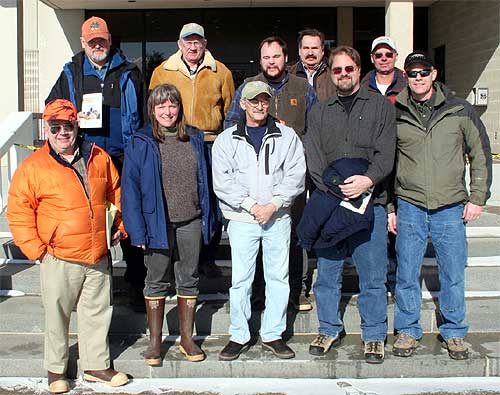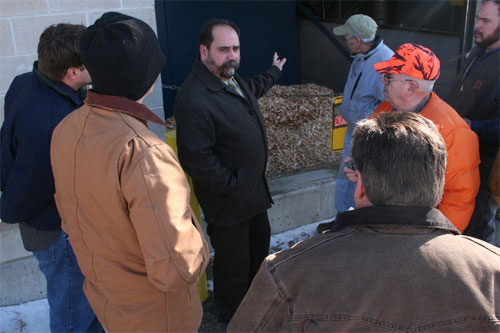 March 15, 2008
The Forest Service introduced Alaska officials to processes and equipment used to produce and utilize energy from woody biomass and cellulose-based household waste, such as paper and cardboard. The Forest Service's Pacific Northwest Research Station brought the group from Thorne Bay, Alaska, to New England, where the Forest Service's Northeastern Area State and Private Forestry branch led them on tours of seven local facilities involved with biomass. The technical assistance tour ran Jan. 22-24.  Photograph courtesy USFS
"When you look at some of the facilities we visited, you can tell there's a lot of potential for using similar facilities in Southeast Alaska," said Brackley. Facilities toured across New Hampshire, Massachusetts, and Connecticut varied in function and design. Site visits included a wood pellet production plant, a special needs educational facility, a biomass energy power plant, a college campus, paper and cardboard densification materials production plants and a hospital. All either produced wood-based fuel or utilized bio-mass for local heating, cooling, and power. "This trip proved to them that it's possible to use biomass from local, renewable resources for energy production," said Rob Clark, a forest resource management group leader from the Forest Service's Durham, N.H., field office. "Instead of shipping their paper and cardboard to Seattle for recycling, we showed them options to recycle it locally into fuel to heat buildings or produce electricity. That saves money and makes sense."  Photograph courtesy USFS
Eight of the tour participants were from Southeast Alaska, including Thorne Bay Mayor Jim Gould. "In Thorne Bay we're looking at this more for the development of jobs," Gould said. "We do know, though, that a lot of Southeastern Alaskan communities could benefit from a regional solid waste disposal facility. We're also looking at the biomass side of things, to get a biomass market started here in Southeast Alaska, in particular, near Thorne Bay." Gould saw many technologies in New England that applied to Southeast Alaska, and encouraged members of other communities in Southeast Alaska to participate in similar orientation trips if they were offered the opportunity.
Source of News & Photographs:
Publish A Letter in SitNews Read Letters/Opinions
|